15 Health Benefits of Sukhasana & How to Do It?
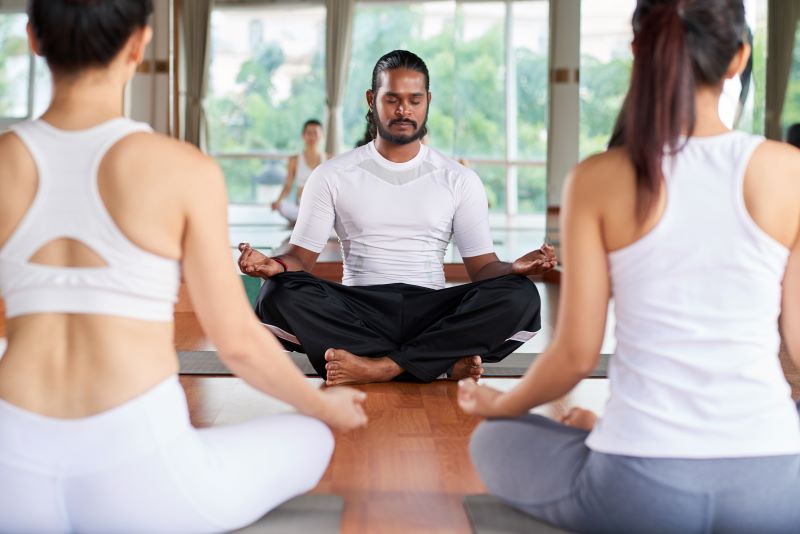
Yoga calms your mind and rejuvenates your mind, body, and soul, thus making you energetic. If you have recently been practising yoga, starting with the easy pose is better. This is because it removes all your anxiety and stress and keeps your body at peace before entering the complex yoga poses.
Learn about the various health benefits of Sukhasana or the Easy pose, the process, and the precautions you must take while practising.

Table of Contents

What is Sukhasana or Easy Pose?
The term Sukhasana is derived from the Sanskrit words ‘Sukham’, meaning ‘happiness’ or ‘delight’, and ‘asana’, meaning ‘posture’. Sukhasana is a meditative yoga pose characterised by a seated posture with cross legs.
One of the significant benefits of Sukhasana, or easy pose, is that it helps to align your spine correctly and is a simple exercise suitable for beginners. Generally, you can perform this exercise as a warm-up pose before doing other exercises or as a finishing pose after completing other exercises.
How to Perform Sukhasana?
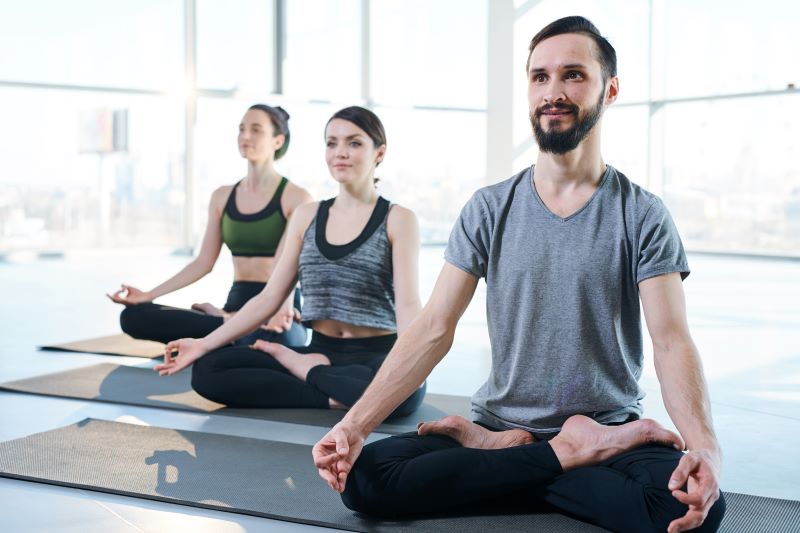
Follow the step-by-step guide to perform this exercise:
Step 1: Start by sitting straight with your legs stretched carefully in front of your body.
Step 2: Bend your left leg and place your left foot under the right thigh.
Step 3: Follow a similar process with your right leg. Carefully place your right foot under your left thigh.
Step 4: Adjust the legs and body to get comfortable with the posture.
Step 5: Now, sit straight, keeping your neck, head, and spine straight, and place your palms on the thigh.
Step 6: Relax your shoulders and bend your elbows. Now, close your eyes and take slow, deep breaths, relaxing your body.
Step 7: Focus, concentrate, and be in that posture for some minutes.
Step 8: Practice this exercise twice or thrice throughout the day by changing the position of your legs.
15 Health Benefits of Sukhasana
Sukhasana enriches your soul and keeps you energetic. The following are the benefits of this yoga pose.
1. Improves Concentration Levels
As it is a meditative pose with a relaxing effect, you tend to concentrate as your mind, body, and soul blend into one. This helps significantly in reducing stress and anxiety levels.
2. Provides Good Posture
An easy pose allows for the proper alignment of your spine. This, in turn, helps to gain adequate body posture, strengthening your back muscles and shoulders.
3. Lengthens Spine and Back Muscles
You must sit in peace, keeping your spine straight while performing this exercise. Therefore, this exercise helps lengthen your spine and back muscles. This, in turn, helps you to maintain a proper balance for your body.
4. Allows Better Digestion
Sitting straight during the exercise allows blood flow towards your lower abdomen and helps in better digestion. This reduces gastric problems and any other issues related to indigestion as well.
5. Stretches Your Ankles and Knees
Sukhasana unlocks your hips and prevents minor sprains. Then, as you sit cross-legged, it stretches your ankles and knees and helps release tension from the body parts.
6. Promotes Flexibility
Sukhasana aids in improving flexibility in the hips, knees, and ankles. The cross-legged position gently stretches these areas, enhancing overall flexibility and mobility.
7. Enhances Respiratory Function
Regular practice of Sukhasana encourages deep breathing, which strengthens respiratory muscles and improves lung capacity. This leads to better oxygen intake and overall respiratory health.
8. Calms the Mind
The meditative aspect of Sukhasana induces a sense of calm and tranquillity. It helps reduce mental stress, promote emotional well-being, and foster inner peace.
9. Boosts Circulation
The seated posture of Sukhasana promotes healthy blood circulation throughout the body. Improved circulation delivers nutrients and oxygen to cells while removing toxins, enhancing overall health.
10. Alleviates Anxiety and Depression
The meditative and calming nature of Sukhasana can alleviate symptoms of anxiety and depression. It helps soothe the mind, reduce negative thoughts, and promote emotional balance.
11. Improves Concentration and Focus
Regular practice of Sukhasana enhances mental clarity, concentration, and focus. It trains the mind to stay present, improving cognitive function and productivity.
12. Enhances Self-awareness
Sukhasana encourages self-reflection and introspection, leading to increased self-awareness. It allows individuals to connect with their inner selves, leading to personal growth and self-discovery.
13. Stimulates the Chakras
Sukhasana helps balance and stimulate the energy centres or chakras within the body. This promotes overall energy flow, vitality, and holistic well-being.
14. Cultivates Mindfulness
By focusing on the breath and bodily sensations, Sukhasana cultivates mindfulness. It encourages living in the present moment, fostering a deeper appreciation of life and experiences.
15. Supports Spiritual Growth
Sukhasana is often regarded as a gateway to spiritual exploration and enlightenment. Regular practice can deepen one's spiritual connection, creating a greater sense of purpose and fulfilment.
Other Benefits
The other benefits of Sukhasana include:
Practising easy poses helps to increase height in your kids.
Sukhasana broadens your chest and collarbones, thus stretching your body.
Relieves lower back pain and chronic knee and leg pains.
Easy pose activates the parasympathetic nervous system.
It helps to reduce blood pressure.
The Easy pose garners your internal happiness as you can concentrate on your body.
It is helpful if you have a stiff or rigid body posture.
Practising Sukhasana helps in losing weight.
The Mudras of Sukhasana (Easy Pose)
Sukhasana, or easy pose, can be augmented by incorporating mudras and hand gestures that channel the body's energy flow, offering holistic benefits to the practitioner. Here are some mudras you can incorporate into your Sukhasana practice:
1. Gyan Mudra
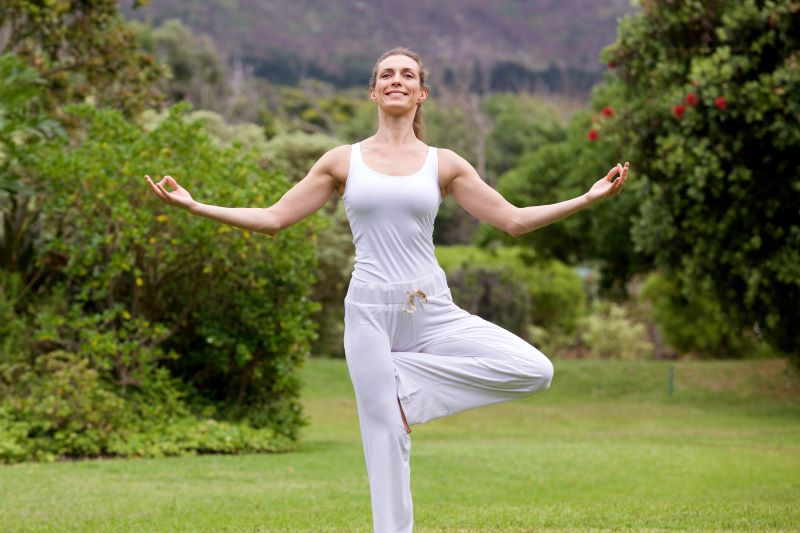
The Gyan Mudra, also known as the gesture of knowledge, involves touching the tip of the thumb to the tip of the index finger while keeping the other fingers straight and relaxed. Rest your hands on your knees with palms facing up.
Benefits of Gyan Mudra: This mudra promotes mental clarity, concentration, and calmness. It stimulates the brain, enhances memory, and alleviates stress and anxiety.
2. Anjali Mudra
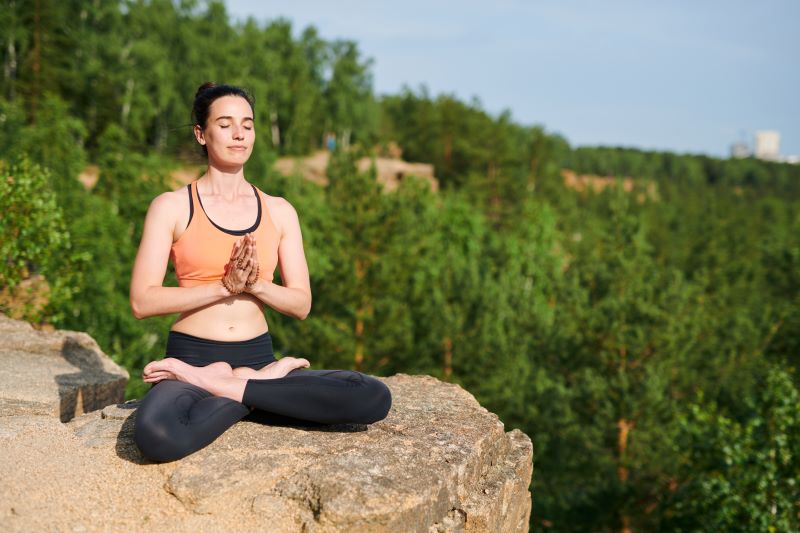
In Sukhasana (Easy Pose), sit comfortably with palms facing each other. Bring your hands together at your heart centre in Anjali Mudra (Prayer Hands).
Benefits of Prana Mudra: This combination promotes calmness and focus, which is ideal for meditation or starting your yoga practice.
3. Apana Mudra
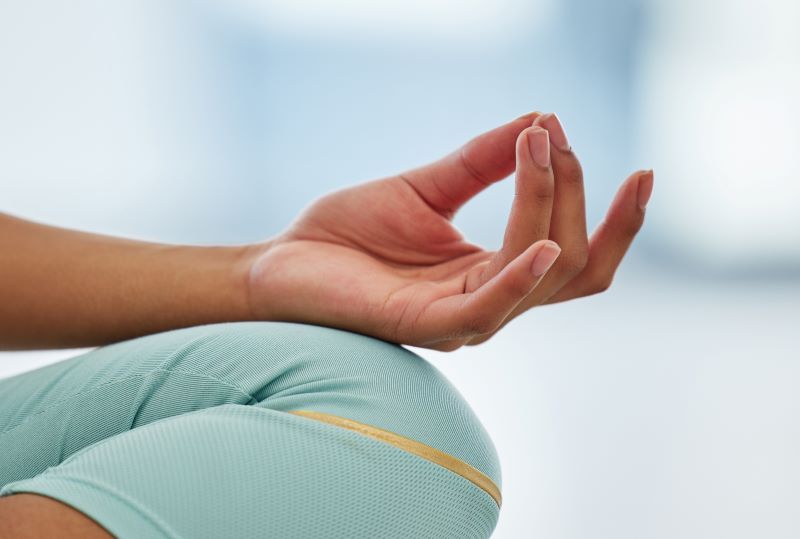
Apana Mudra, the mudra of elimination, is formed by joining the tips of the thumb, middle finger, and ring finger while extending the other fingers. Rest your hands on your thighs, palms facing down.
Benefits of Apana Mudra: This mudra is believed to aid in detoxification, digestion, and elimination of waste from the body. It can also help relieve constipation and promote a healthy metabolism.
4. Shuni Mudra
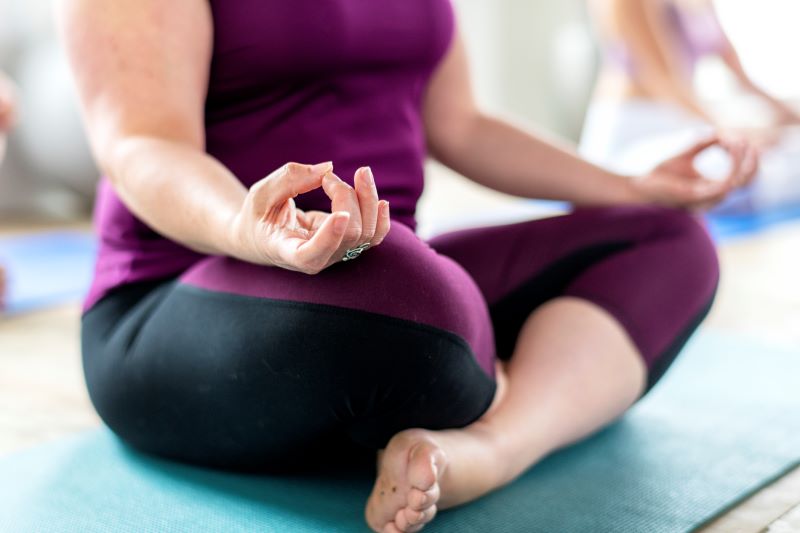
Shuni Mudra, the gesture of patience, is created by touching the tip of the middle finger to the tip of the thumb while extending the other fingers. Rest your hands on your thighs, palms facing up.
Benefits of Shuni Mudra: This mudra enhances intuition, focus, and discipline. It can also help develop patience, inner strength, and self-awareness.
5. Prithvi Mudra
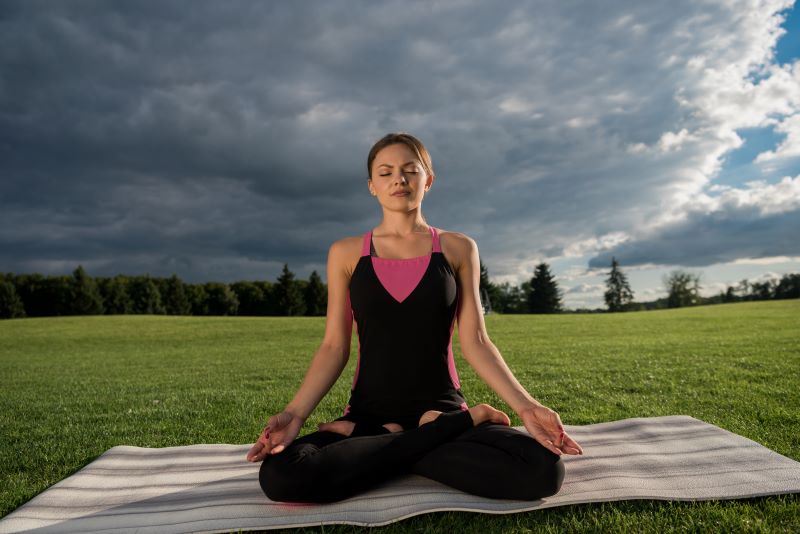
Prithvi Mudra, the mudra of earth, is formed by touching the tip of the ring finger to the tip of the thumb while extending the other fingers. Rest your hands on your thighs, palms facing down.
Benefits of Prithvi Mudra: This mudra is believed to promote grounding, stability, and nourishment. It can help increase energy levels, relieve fatigue, and foster a sense of security and balance.
Types of Sukhasana
Sukhasana offers variations to accommodate different levels of flexibility and expertise. Understanding the various types of Sukhasana can help you choose the most suitable variation for your practice. Here are the two main types:
1. Ardha Sukhasana

Ardha Sukhasana, or Half Easy Pose, is a modified version of Sukhasana where only one leg is crossed over the opposite thigh. This variation is ideal for beginners or individuals with limited flexibility. By crossing one leg over the other, practitioners can still experience the benefits of Sukhasana while gradually building their practice.
2. Purna Sukhasana
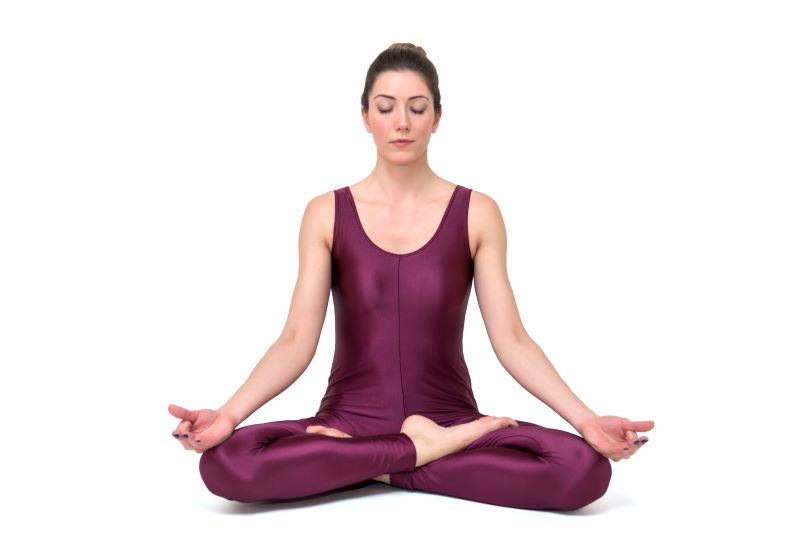
Purna Sukhasana, or Full Easy Pose, is the traditional and complete version of Sukhasana. In this variation, both legs are crossed, with each foot placed on the opposite thigh. Purna Sukhasana provides a deeper stretch and requires greater flexibility than Ardha Sukhasana. It is suitable for intermediate to advanced practitioners who are comfortable with the full expression of the pose.
By understanding these variations of Sukhasana, you can tailor your practice to suit your individual needs and abilities. Whether you're a beginner looking to ease into yoga or an experienced yogi seeking a deeper stretch, there's a Sukhasana variation for you.
Things to Know Before Doing Sukhasana Yoga
Before embarking on your Sukhasana practice, it's essential to consider certain factors to ensure a safe and fulfilling session. These preparatory steps can help you derive maximum benefits from the pose while minimising the risk of discomfort or injury.
- Choose a Quiet Space: Choose a serene, noise-free environment where you can concentrate without distractions. A peaceful atmosphere will enhance your focus on your posture and your breathing.
- Use Proper Yoga Equipment: A comfortable yoga mat provides a stable and supportive surface for your practice. Additionally, consider elevating your hips with a cushion or folded blanket, especially if you have limited flexibility.
- Wear Suitable Attire: Dress in loose-fitting clothing that allows unrestricted movement during the practice. Avoid tight garments that may constrict your breath or impede energy flow within your body.
- Practice on an Empty Stomach: It's advisable to practice Sukhasana on an empty stomach, preferably a few hours after eating. This helps prevent discomfort and allows you to fully engage in the posture without distractions.
- Warm-Up Beforehand: Before starting the Easy Pose, engage in gentle warm-up exercises to prepare your body. Focus on stretching and loosening the muscles in your hips, knees, and ankles to facilitate ease of movement.
- Stay Hydrated: Maintain adequate hydration throughout your practice, but avoid consuming large amounts of water immediately before starting. Excessive intake may lead to frequent breaks for restroom visits, disrupting your concentration.
- Focus on Conscious Breathing: From the moment you begin your Sukhasana practice, pay attention to your breath. Take deep, mindful breaths to induce relaxation and promote sustained awareness throughout the posture.
How Long to Sit in Sukhasana?
The duration you should sit in Sukhasana or Easy Pose can vary depending on your experience level and individual comfort. It's essential to approach the practice with mindfulness and listen to your body's signals to determine the appropriate duration.
- For Beginners: If you're new to Sukhasana, start by holding the pose for a few minutes. Aim to initially sit in Sukhasana for 1 to 5 minutes, focusing on maintaining proper posture and steady breathing. Use this time to acclimate your body to the pose and gradually increase your comfort level.
- For Intermediate Practitioners: As you become more accustomed to Sukhasana, you can gradually extend the duration of your practice to 5 to 10 minutes. This allows for more profound relaxation and allows you to refine your alignment and focus.
- For Advanced Practitioners: Experienced practitioners may choose to hold Sukhasana for extended periods, ranging from 10 to 15 minutes or more. This extended duration enables advanced meditation practices and offers more significant benefits for physical and mental well-being.
Regardless of your level, it's essential to approach Sukhasana with patience and respect for your body's limitations. If you experience any discomfort or strain during the practice, gently release the pose and take a moment to rest.
Risks of Overdoing Sukhasana
While Sukhasana offers numerous physical and mental benefits, it is essential to be mindful of the risks associated with overdoing it. To avoid strains or injuries, practice Sukhasana carefully and within your limits.
- Knee Strain: Overexerting the knees in Sukhasana can lead to strain, especially if your hip flexibility is limited. This may result in discomfort and increase the risk of knee joint injuries.
- Ankle and Hip Injuries: The deep stretch experienced in Sukhasana can put pressure on the ankles and hips, potentially causing injuries if these areas are not adequately prepared or if the pose is held for an extended period.
- Lower Back Pain: Improper alignment in Sukhasana can strain the lower back. Maintaining a straight spine is crucial to preventing discomfort and potential injury in this area.
- Nerve Compression: Prolonged holding of Sukhasana may compress nerves in the legs or lower back, leading to sensations of numbness, tingling, or even nerve damage.
- Reduced Blood Circulation: Overdoing Sukhasana can restrict blood flow to the legs and feet, resulting in discomfort or circulation issues.
- Aggravation of Existing Conditions: Individuals with pre-existing conditions such as sciatica, arthritis, or previous injuries should exercise caution when practising Sukhasana, as it may exacerbate these issues.
Practising Sukhasana with proper alignment and form is essential to mitigate these risks. Begin with a gentle warm-up to prepare your body, and gradually ease into the pose. Listen to your body's signals, and if you experience any pain or discomfort, release the pose and allow your body to rest.
Important Tips for Practising Sukhasana
Sukhasana is not a strenuous exercise to perform. However, consulting a trainer will be beneficial if you want to know the correct posture for this exercise. Here are some tips for practising the exercise:
- Keep Knees Close to the Ground: Keep your knees close to the floor as much as possible when performing this exercise. However, do not pull your legs too close to the pelvis.
- Sit on a Block: You can alternatively practise this exercise by sitting on a block or a bolster. This will allow gravity to pull your body weight towards the floor. This will also ensure a safe pelvic posture.
- Increase Elevation: If you are suffering from back pain, use several blocks to allow greater elevation from the ground. This will bring much more relief. Additionally, keep cushions and blankets underneath your ankles to avoid bruises.
- Sit Against the Wall: Sitting against the wall supports your spine and keeps you upright, which can relieve back pain.
- Avoid Areas with Loud Music/Sound: You must avoid sitting in an area that has too much music or sounds while in a meditating posture. This will allow concentration and focus on your mind and body.
- Sit with a Composed Mind: Do not allow your mind to wander while doing this exercise. Instead, try to sit with a composed mind, letting go of anxiety.
What are the Precautions and Contraindications of Sukhasana?
Apart from the advantages of Sukhasana, there are certain precautions and contraindications that you must keep in mind:
You must avoid sitting on the floor if you have arthritis in your hips, knees, and feet.
If you have tight hips, you must perform a hip opening sequence before practising Sukhasana.
You must not practise this exercise if you have undergone any abdominal or hip surgery or have some injury in the lower back or hips.
For beginners, it is better to practise this exercise, keeping your back supported against the wall. This will allow body-breath connection, and you will not find it difficult or uncomfortable to sit with your spine erect.
To avoid pinching the sciatica nerve, avoid doing this exercise if you have issues related to sciatica.
Who Should Avoid Doing Sukhasana?
While beneficial for many, Sukhasana may not be suitable for everyone. Individuals with certain health conditions or physical limitations should exercise caution or avoid practising Sukhasana altogether to prevent discomfort or exacerbation of symptoms.
- Pregnant Women: Sukhasana may put pressure on the abdomen and pelvis, potentially causing discomfort or complications during pregnancy.
- Individuals with Knee or Hip Injuries: Those with knee or hip injuries should avoid Sukhasana, as it may aggravate the condition or impede healing.
- Severe Lower Back Pain: Sukhasana requires sitting with an upright spine, which can exacerbate severe lower back pain. Individuals experiencing acute discomfort in this area should avoid the pose.
- Recent Surgeries: Those who have undergone abdominal or hip surgeries should avoid Sukhasana until they fully recover and receive clearance from their healthcare provider.
- Limited Hip Flexibility: Individuals with limited hip flexibility may find Sukhasana uncomfortable or challenging to perform. It is essential to listen to your body and avoid forcing the pose if it causes discomfort or strain.
What are the Easy Modifications of Sukhasana?
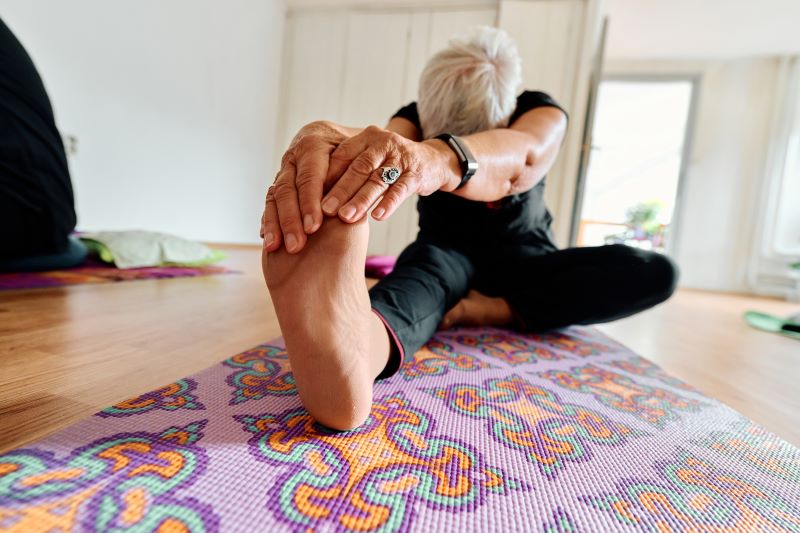
Some modifications to the easy pose include:
Extend your legs in front of you and sit on two folded blankets.
Cross your right thigh in front of your left thigh and bend down your knees.
You can move your knees too close, so the feet are exactly under them. This will ensure firm support.
Interlock your finger and stretch your arms overhead.
While sitting, try to widen the hips to allow more space to sit comfortably.
So, now that you know about the health benefits of Sukhasana, try practising them at home. It is not only beneficial for your body but keeps your mind at peace. Meditation is a beautiful remedy to kill depression. This exercise is a form of meditation that allows you to focus on yourself entirely.














